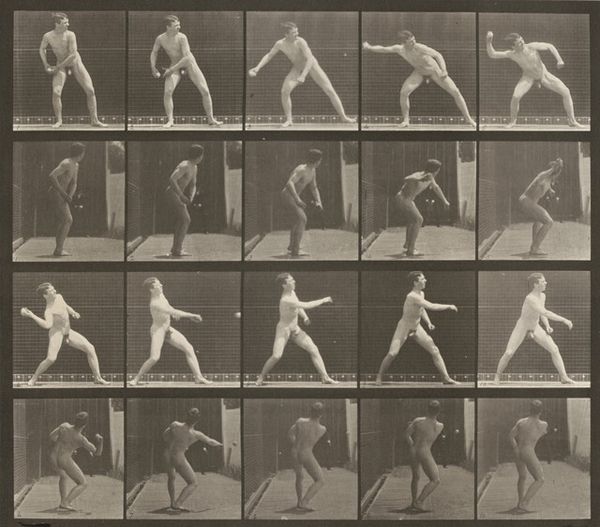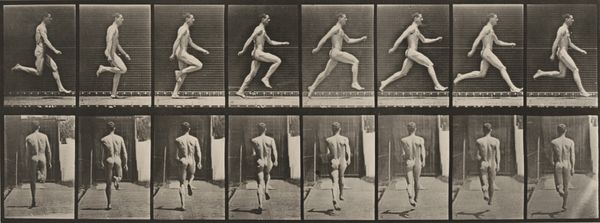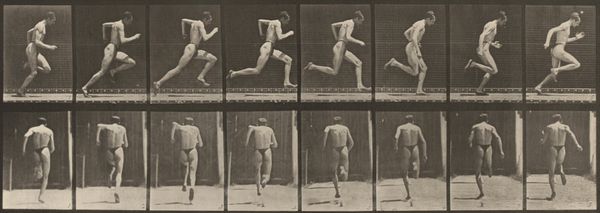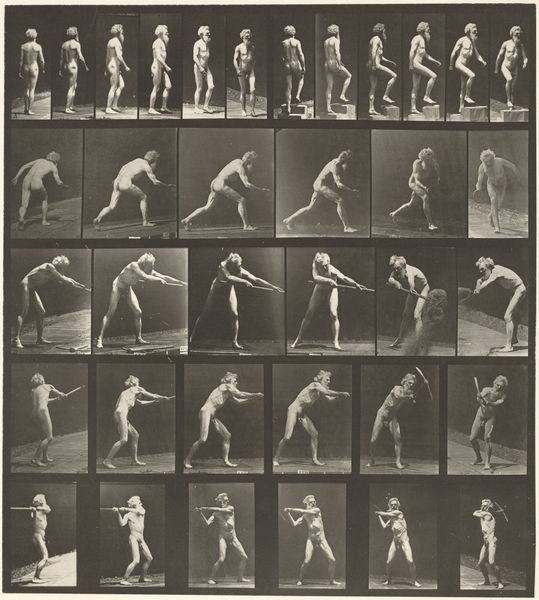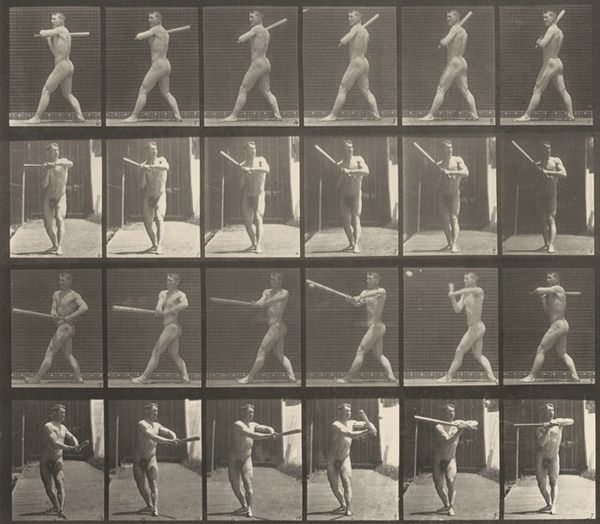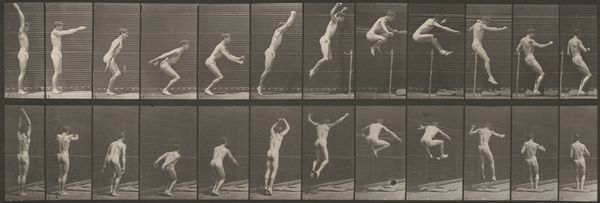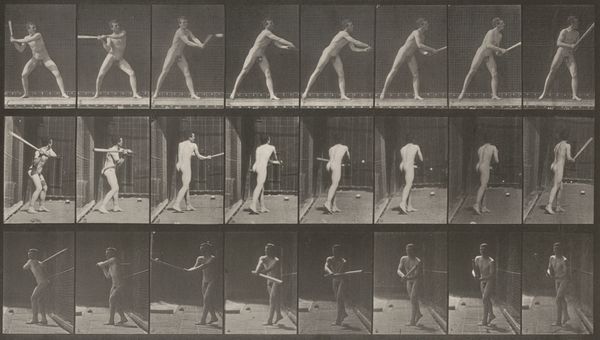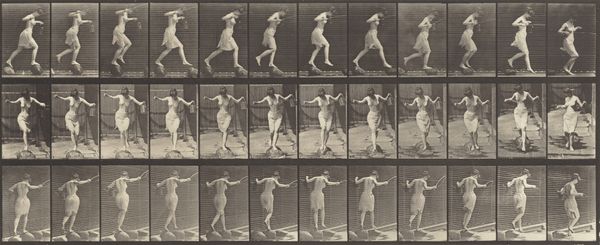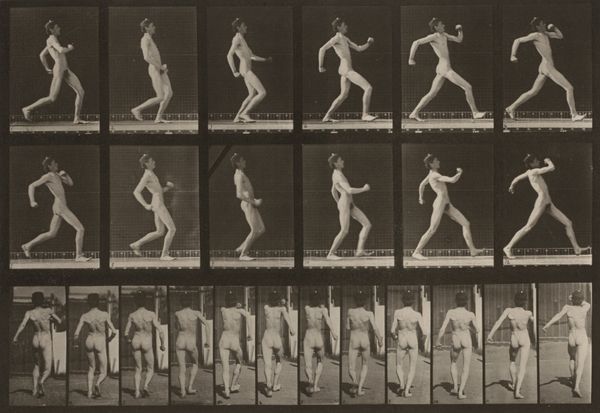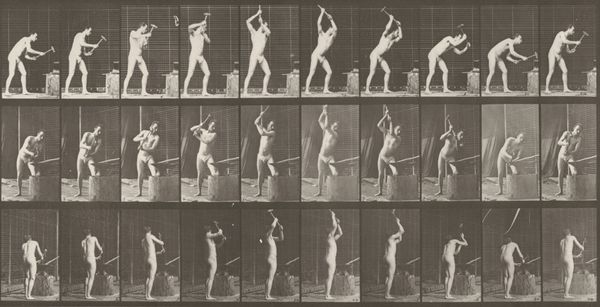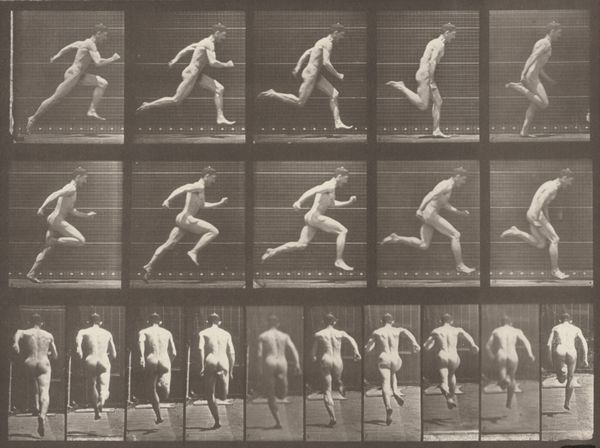
print, photography
#
action-painting
#
portrait
# print
#
photography
#
19th century
#
charcoal
Dimensions: image: 26.9 × 25.4 cm (10 9/16 × 10 in.) sheet: 48.2 × 61.2 cm (19 × 24 1/8 in.)
Copyright: National Gallery of Art: CC0 1.0
Curator: Looking at this piece, I’m immediately struck by its seemingly simple, yet mesmerizing quality. The rhythmic progression of the figure is captivating. Editor: Indeed. What we have here is Plate Number 282. "Baseball, catching and throwing," produced in 1887 by Eadweard Muybridge. A pioneering figure in photography, Muybridge is renowned for his groundbreaking work on motion studies. Curator: So, this image is essentially a scientific document, capturing sequential phases of movement, right? Made to explore the mechanics of throwing and catching a baseball? It reads as strangely clinical and intimate. The act is laid bare. Editor: Precisely. Muybridge employed a battery of cameras to meticulously record each stage of the action. Consider the cultural and institutional contexts of its creation. The late 19th century witnessed a burgeoning interest in both science and sports. His work was both artistic and scientific, existing within these realms and used by scientists, artists, and sports enthusiasts. Curator: I’m intrigued by the process. What material did Muybridge actually use, because this method involved an incredible amount of coordination? The man had to set up, pose nude models, arrange all of the cameras, trip the shutters! Editor: Yes, it would be interesting to consider Muybridge's studio setup as a production line of sorts, even before such mechanized setups became widespread. Also, it challenges the romanticized image of artistic labor. His "art" really relies on careful technological setup, systematic timing, and post-production processing of printed material. He sold prints to all manner of institutions. Curator: You’re absolutely right, that systematic labor of motion-capture. As well as being innovative from a scientific standpoint, I find myself absorbed by the subtle tonal variations of the image, those grayscale levels in the photographs and prints… how the image invites consideration of the human form. Editor: Beyond its immediate impact, Muybridge's work had a profound influence on subsequent generations of artists, particularly in cinema and animation, as it blurred boundaries between art and document, while investigating athletic labor as subject matter for visual reproduction and circulation. It also challenges notions of artistic “genius”. Curator: That’s such a relevant point, considering the technology being utilized! This really reveals the process of dissecting human actions. Thanks for the insight! Editor: Of course. Looking at these materials and institutional influences provides valuable perspectives, and challenges to traditional art discourse!
Comments
No comments
Be the first to comment and join the conversation on the ultimate creative platform.
